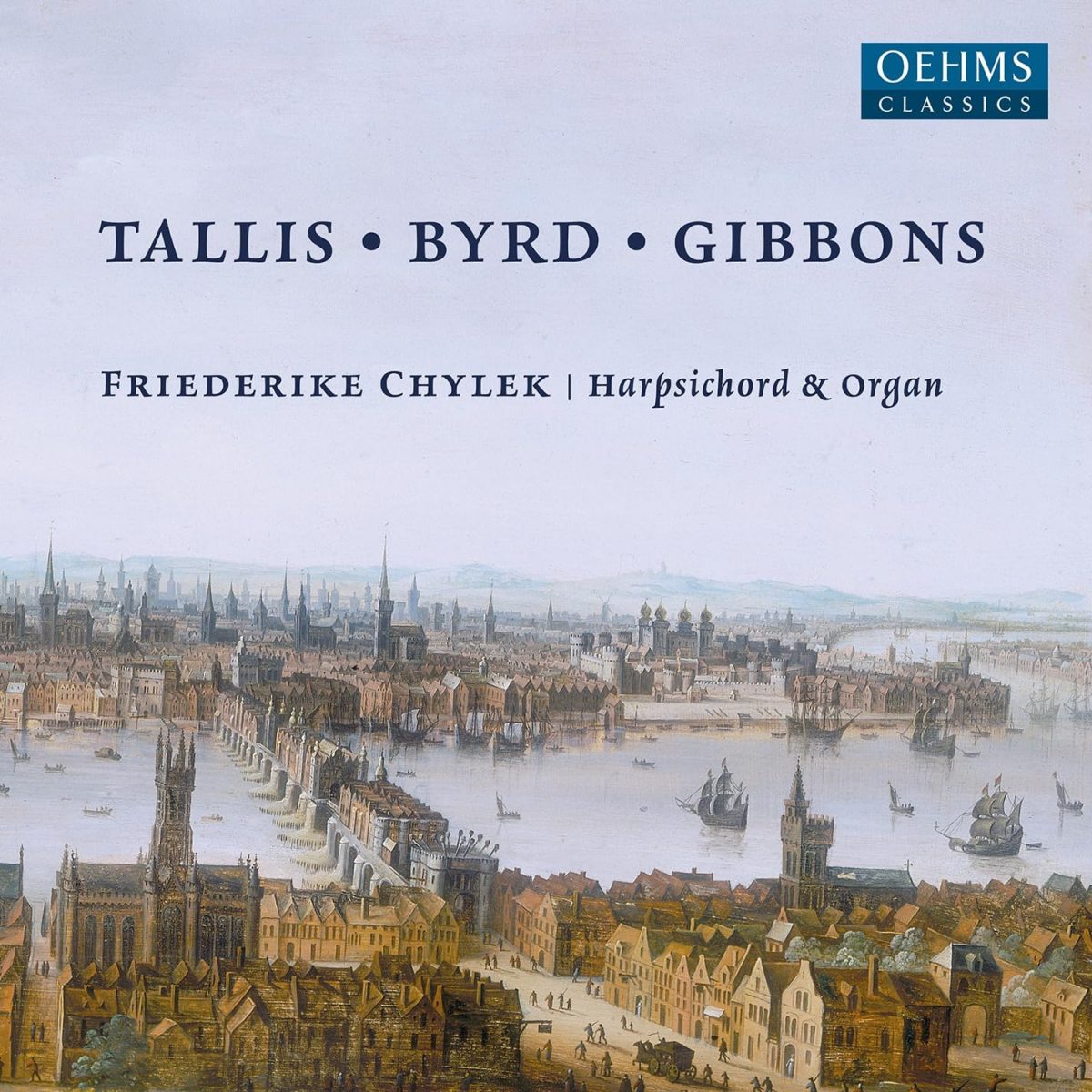Friederike Chylek harpsichord & organ
78:14
Oehms Classics OC 1727
The succinct title of this recording is a rollcall which names three of the finest English composers for keyboards. Byrd and Gibbons without question, but Tallis? Yes, because his two huge settings of Felix namque are the final pieces in the development of keyboard music in England before the tipping point which led to the sequence of fantasias composed by Byrd: the sacred narrative of the plainsong replaced by the secular narrative of the composer’s own imagination and creativity. Friederike Chylek (FC) bookends her programme with these two pieces, performing both on the organ – primarily a harpsichordist, she is unnecessarily modest about her capabilities on the other instrument. Apart from one rather jarring change of registration in Felix namque #1 her interpretations of both pieces are models of clarity, played on a Swiss instrument of 1715. Many recordings of these two pieces give the impression of imposing some sort of point or “agenda” on them, emphasizing their length, their difficulty and/or their intricacy, whereas FC is content to express Tallis’s own creativity and allow his musical narrative to develop without intrusive gestures.
In three previous recordings – go to Early Music Review website, click on “Search” and type “Chylek” – from 2015 onwards, FC has emerged as a major exponent of the keyboard music of Byrd. Having recorded an entire disc of his music in 2020, she devotes nearly half of the current release to him in this, his quatercentenary. Like Tallis’s pieces, Ut re mi fa sol la is entrusted to the organ, a sound decision since this outstanding work benefits from the organ’s ability to sustain notes, whether maintaining the cantus firmus or affirming a dash of piquancy in some cadences. There are fine performances on the 1699 Neapolitan harpsichord of masterpieces such as the Third Pavan and Galliard, Walsingham and Fortune. Finest of all, and indeed the finest of any commercially recorded version of the work, is O mistress mine – one of Byrd’s gems that should be heard much more often, given here in a performance of perfection encapsulated in the balance and delicacy of the concluding cadence.
Like Byrd, Gibbons is allocated seven pieces. Most of these are lighter works like the modest Whoop do me no harm good man, the significant exception being the Fantasia in C (MB20/14) which illustrates how much Gibbons learnt from Byrd whether the older composer was his teacher, mentor or influence. That said, Gibbons’s compositional voice is clearly audible, especially in his exploitation of the harpsichord’s lower register.
This is an altogether delightful recording, with an outstanding exponent of early English keyboard music performing a well-chosen selection of works by three composers whose individual pieces always provide edification and pleasure.
Richard Turbet
